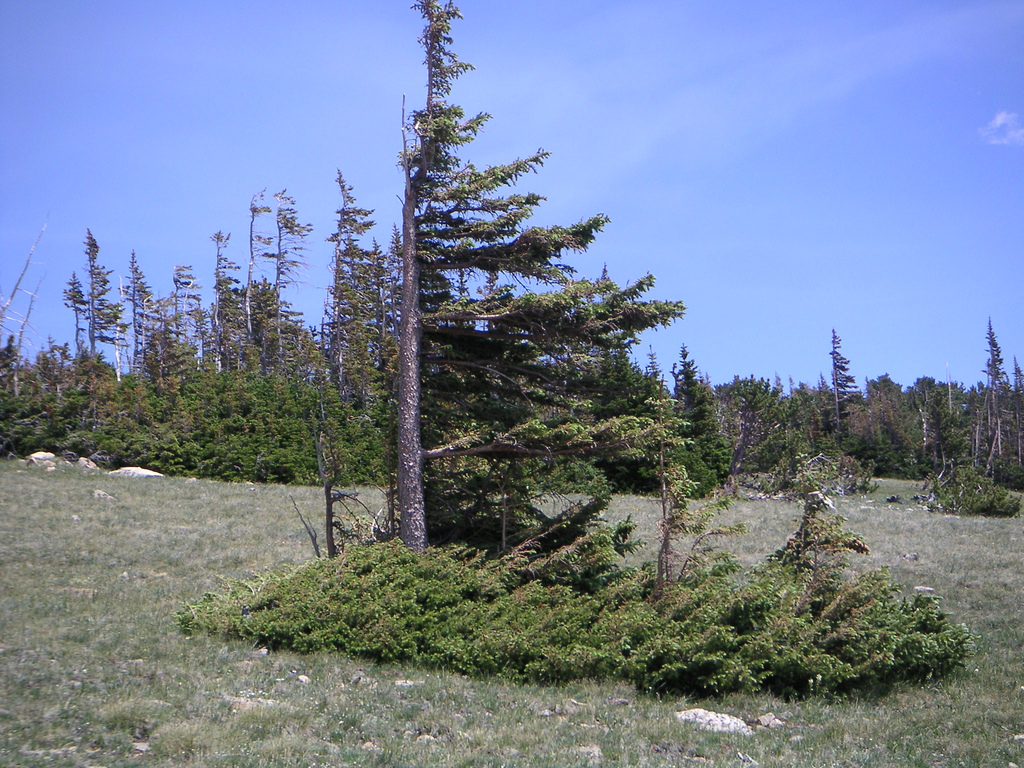
Though the harsh weather of the Taiga does not sustain a wide diversity of plants, there are still many species that have evolved to survive the unfavorable conditions.
Trees that are commonly found in Taiga areas are Black Spruces (found in Alaska and Canada), Dahurian Larches (pictured above, found in Siberia), Balsam Firs (Canada, Northern United States), and Tamarack Larches (Canada, Northern United States, Alaska).
These tree species are largely coniferous, since their conical shape prevents excess snow from accumulating on their branches. The branches are very flexible so they do not snap off from the weight of snow. In addition, their leaves are needle like, which also prevents snow accumulation. Because the top of this cone shape absorbs most of the sunlight, not much sunlight reaches the ground.
The majority of trees within the taiga are evergreens. Because they keep their leaves throughout the winter, this allows them to immediately resume photosynthesis once the summer arrives, rather than having to spend time growing new leaves.
To keep roots from freezing over, as well as protecting the trees from harsh winds, the roots of these trees grow downward into the soil.

Because of the constant cold winds, many trees take a "Krummholz" shape, where their branches grow to be deformed. Trees affected by this often only survive when sheltered by rock formations or snow covers.

Plants in the taiga grow close to the ground, giving them better protection against the wind and the cold. Certain seed plants you can find in the taiga are the Partridgeberry (pictured above), the Labrador Tea, Fireweed, and berries such as cranberries, raspberries, and blueberries. These berries are a vital foodsource to primary consumers in this biome.

Because the plants of the taiga (with the exception of trees) grow close to the ground, they do not get much sun and only sometimes are able to complete a successful photosynthesis.
The Taiga experiences periodic forest-fires, with the interval between them ranging from 20 to nearly 200 years! These fires clear out dead plant matter, allowing for the sun to reach the ground and for new plant growth to comense.